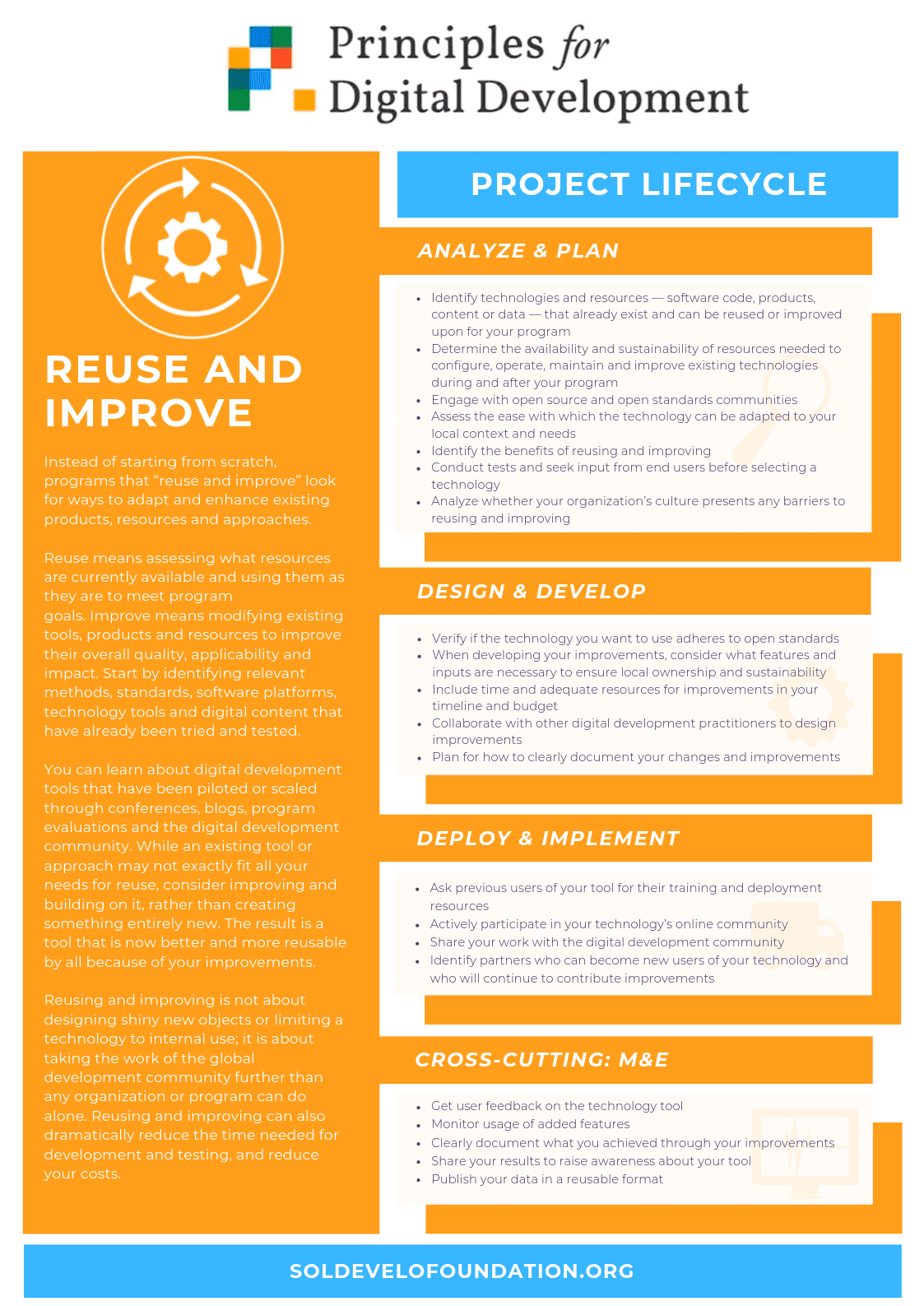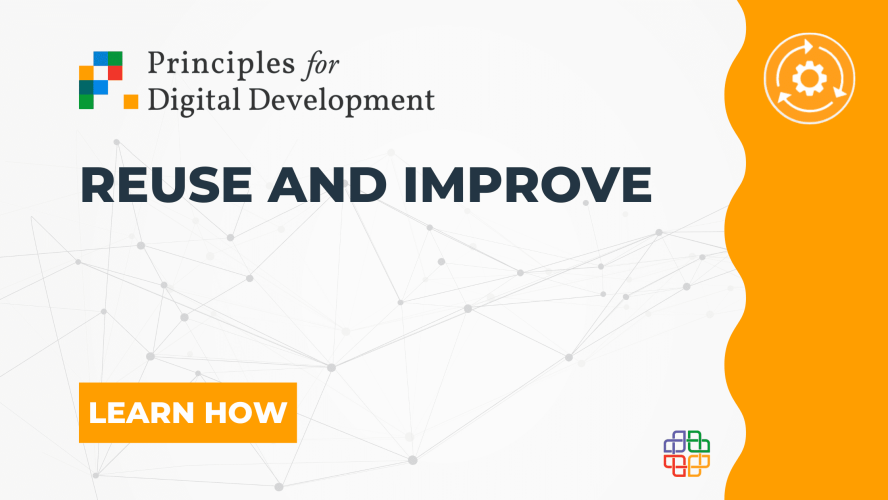In the previous article on Principles for Digital Development, we have talked about using already made products, ideas or software. Now we would like to expand the topic and say more about the 7th Principle of Digital Development: “Reuse and Improve”. In this topic, we will focus on using previous owners experience and knowledge to avoid problems and barriers in our projects. We also show where you can find help.
In the non-commercial world like the world of nonprofits, there is no place for competition or not sharing good values. We have to help and give others hand if they need it. Also, many problems are similar in nonprofits around the world. What’re more solutions for the problems are close or even the same. So why not to use others experience, knowledge and training to create a better project with bigger social impact and engagement of people?
Use ideas or projects already made
It’s hard to start a project with nothing, sometimes only with idea or scratch. It’s even harder when we have to discover paths to achieve success and overpower setbacks. If you want to choose the more reliable path we suggest you search and use ideas or projects already made. It will be easier for you to implement these in your local country than create something new which could be inappropriate.
By “reuse” we mean assessing resources already created and using them in your own projects, programs. To make them the most usable you have to “improve” them and adapt to your project. Start by searching for similar projects, ideas as yours that have been already created. You can learn a lot from these successful and not successful so don’t look for only good results. Rather find similar points and try to analyze what was good and what needs improvement. Projects that you find may not fit all your needs, resources and available capabilities. Consider improving, building and developing on it. You will get a project which is better, more suited to your local partners/recipients and not limited by troubles. Which you avoid by learning from other projects.
The main pros of creating with the motto “Reuse and Improve” is reducing the time needed for the project and saving money. About others, we will talk about in later points of your guide. So stay with us 🙂
Reuse and Improve rules
There are a few core rules which will guide you thru the “Reuse and Improve” Principle:
- Find out which existing technology, system, program, projects are used by your target group of recipients. Think about how you can improve and modified it in your project/idea. Ask your teammates for help and review sites with ended grants to find new solutions.
- Collaborate and talk with other companies/organization. Build a relationship that could help you in the future in many areas (contacts, technology, partners, fundings, implementations). Your partners could become the first users of your project and at the same time give you important feedback.
- Engage with different communities around your country or even world. Many initiatives aren’t unique and somebody else could have the same problem as you have. You can ask for solutions to problems or ideas to solve troubles. Questions like: Is their project was successful? Why/ why not? What they will change in it? could help you.
- If you find a similar project using the same technology, sources or trying to solve the same problem you can ask the previous owners for training your team or consultation. Or even ask for checked ways to promote your action.
Share your work with community
- Share your work and experience with the community and describe your problems and solutions for it. Discuss the challenges of reusing and improving in a project like yours. Plan how to clearly and easily document your changes, sources and tools which you use during your project so they can be easily used by others.
- By sharing your experience you can encourage others to make similar projects like yours in their communities. It will entail a bigger social impact and popularize your idea around the world. You will also promote the project in communities and invite people to use it or create something similar.
- The last point should be about identifying the benefits of reusing and improving. During your project, you find many advantages of “reuse and improve” projects/ideas already made. One of them could be cost savings, a clear path to success, tested solutions or knowledge and experience of other organization. Training or lessons learned from more experienced colleagues can make your initiative run more smoothly with better impact and engagement. You can also meet many great people and shine in the community. Nowadays, contacts are very important so making a long-lasting relationship even professional can pay off in the future.
Create smart
Remember, you don’t have to build something new or start from zero to be innovative. You can also modify, develop an existing tool, sources in a new way to achieve something totally new. Even new point of view can make your project innovative if you offer new solutions for problems. Reuse and improve using good and tested sources, knowledge and experience others. Use your fresh motivation and desire to making good things for others to make great and successful projects.
The Lifecycle of “Reuse and Improve”

To help you apply the “Reuse and Improve” Principle in your digital projects, the creators of the initiative provide a guide. You can find it here.
Continue your journey with the Digital Principles and read about the 8th one – “Adress Privacy and Security“:
Address Privacy and Security | Principles for Digital Development
Learn to use Digital Principles in practice:
Digital Principles Organizational Self-Assessment
Digital Principles Indicator Library
Digital Principle-Focused Evaluation
The Principles For Digital Development: Gold Practices




